Danish Freedom of the Press Collection
331 pamphlets printed during the Freedom of the Press Period in Denmark, from September 14th 1770 to the autumn of 1773. The majority of the pamphlets are printed in Copenhagen by known printers, but the authors are anonymous, with a few exceptions. A few of the pamphlets are printed in Odense, and someone has given the Hague as a false place of publication. The contents of the collection aptly represent what the Danish chose to say in print when they were no longer subject to censorship.
About the collection
The Danish freedom of the press must be understood in context: as part of the development in Europe, highly influenced by the ideas of the Enlightenment of the 18th century. In Denmark, a more palpable change came about, largely due to the efforts of Johann Friedrich Struensee, royal physician to King Christian VII of Denmark. Struensee, from Germany, gained much influence in the Danish court due to the mental illness of the King, and soon became the de facto regent of the nation. He also had an affair with the Queen. Struensee was greatly influenced by the ideas of the Enlightenment, and began to reform Danish legislation accordingly. During his time in power, he issued over 2 000 legislative orders. In the first of these, Struensee abolished the pre-publication censorship, which meant unlimited freedom of the press: "Endvidere en ordre til koacellierne, der giver fuldstændig pressefrihed, således at bøger kan trykkes uden nogen form for censur."
Compared to the limited Swedish Freedom of the Press Act of 1766, which stated that criticism of certain things was banned, the Danish Freedom of the Press was entirely unregulated. This remained the case for the first thirteen months, until October 7th, 1771, when it was made punishable to print a number of things, including anything that could be considered blasphemy or lese-majesty. Many among the old Danish nobility in power tired of Struensee, and in collusion with the hereditary prince and the Queen dowager, they brought about the arrest of Struensee and his friend Enevold Brandt on January 17th, 1772. The two men were executed in April of that year, and later, the Freedom of the Press was once again limited by a number of laws instituted in the autumn of 1773.
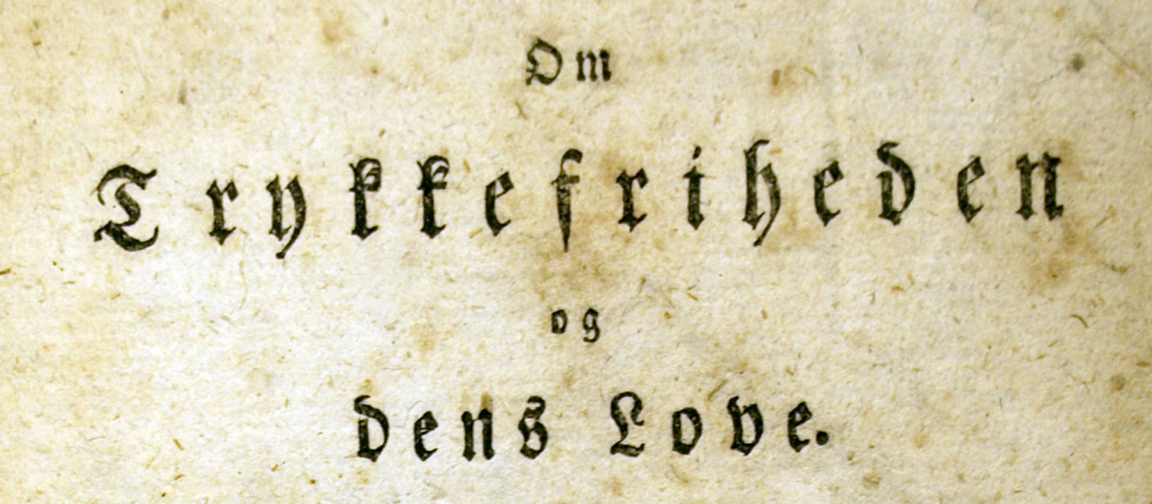
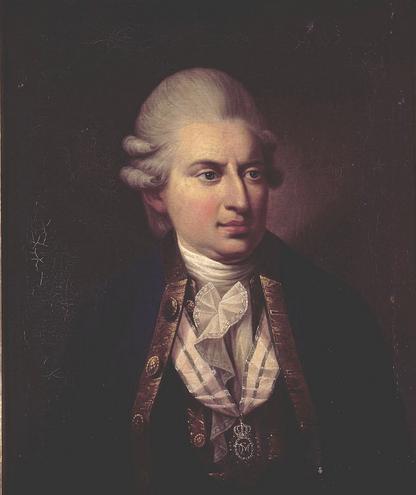
Access the collection
The collection is held in the closed stacks at the Humanities library. It is available for reading room use only.
Catalogue
The collection is catalogued in its entirety.
In Libris
In Supersearch
Humanities library
Renströmsgatan 4
405 30 GOTHENBURG
Phone: 031-786 17 45
Text:
Stefan Benjaminsson
The collection has been catalogued by Stefan Benjaminsson
Pamphlets galore
When the Freedom of the Press was introduced in Denmark in the autumn of 1770, many Danish citizens took the opportunity to immediately print things they had previously been afraid to publish. After the New Year of 1771, their works gushed from the printing presses in such quantities that the term "Freedom of the Press Pamphlets" becomes relevant. The majority of the material published during the period was issued between February and May 1771. The Danish quickly realised something very special was afoot, and began making inventories of the pamphlets that had been issued in the context of the new Freedom of the Press, such as Fortegnelse paa alle de Skrifter som Trykfriheden har givet Anledning til, hvori findes anført Stederne hvor de sælges, hvad de koste, og hvor mange Ark de indeholde, and En kort Erindring om et hvert Skrift til Efterretning for Liebhabere (DS 318). The pamphlets soon became collectable, and the foremost collector in question was civil servant and book collector Bolle Willum Luxdorph (1716-1788). At the time of his death, Luxdorph's book collection exceeded 15 000 volumes, and his Freedom of the Press collection included 1 000 titles. The collection is held at the Royal Danish Library and is now digitised. The Royal Danish Library has an additional collection of 537 pamphlets from the Freedom of the Press period - with an anonymous provenance. At the Aarhus public library is a collection of 221 pamphlets from the Freedom of the Press period. In both Denmark and Germany, there are additional, smaller collections of what is known as Struensiana, meaning pamphlets that pertain mainly to Struensee. These collections include between 150 and 250 titles. The collection of the Humanities Library, covering the same years, amounts to 331 titles and thus compares handsomely to other, similar collections, even if Denmark, as expected, has the largest holdings of materials on the subject.
2020 saw the publication of Grov konfækt: tre vilde år med trykkefrihed, 1770-73, edited by Henrik Horstbøll, Ulrik Langen and Frederik Stjernfelt. This work in two volumes is a comprehensive, in-depth study of the pamphlets of the time, and the authors have based their work mainly on the Luxdorph collection. The brief introduction on this webpage is largely built on their writings. Page references, unless otherwise stated, refer to Grov konfækt.
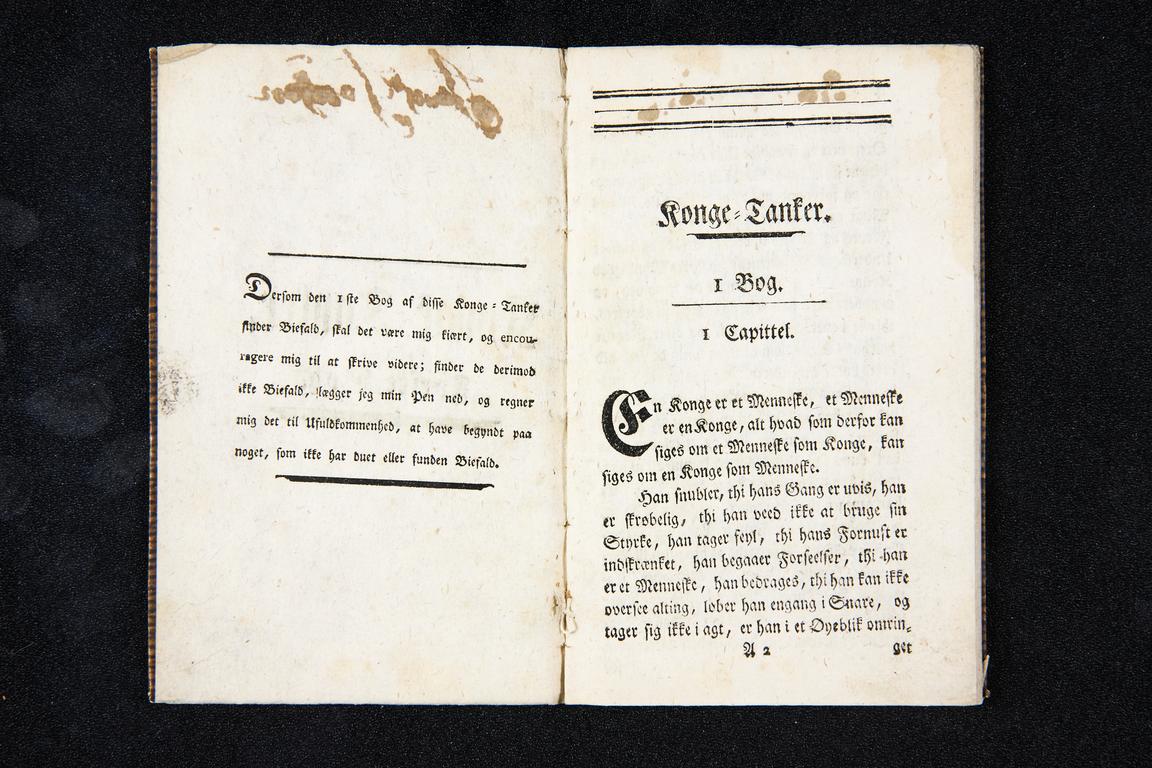
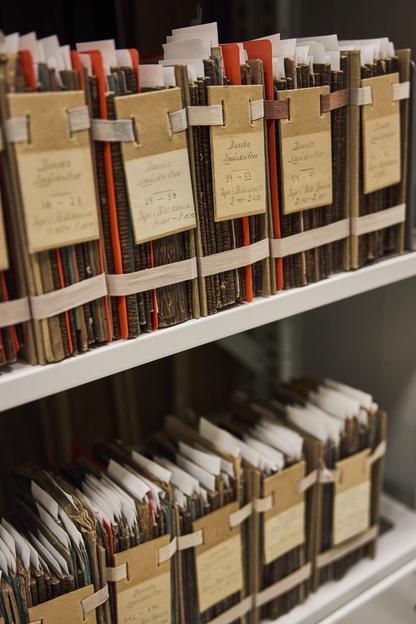
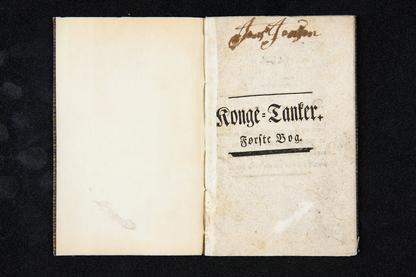
Pamphlet feuds
The opportunity to print whatever you wanted with no risk of reprisal was immediately embraced. Criticism presented in print was just as immediately met with counterargumental pamphlets, which were responded to in turn. As a result, the Danish freedom of the press period was hallmarked by a wealth of these pamphlet feuds, as they became known. The first pamphlet feud was prompted by brewer Christian Bagge, when he issued a pamphlet that criticised the leaders of the brewers' guild: Formeenentlige Aarsager til de mange paa en vis Tiid arriverede Fallissementer ved Brygger-Lauget her i Staden, til nærmere Eftertanke fremlagt af Christian Bagge (DS 53). It was followed by a number of retorts, and the dispute ended when the guild leaders brought Bagge to trial. The authors of Grov konfækt suggest that this likely happened as Bagge had not chosen to publish his pamphlets anonymously. As an early writer of the freedom of the press period, he had yet to discover the benefits of anonymity (Grov konfækt, vol. 1, p. 81).
One of the more prolific writers of the time was Martin Brun, known in Grov konfækt as the Eternal Student (Grov konfækt, vol. 1, p. 27). Brun was among the first to take advantage of the freedom of the press, issuing a number of moralising pamphlets. In 1771, he penned over thirty works, and he comes across as a commoner-philosopher of the Enlightenment (Grov konfækt, vol. 1, p. [281]). He often presented his criticism in the form of theatrical plays, dialogues or correspondence. The Danish Freedom of the Press Collection includes some 30 of Brun's texts, such as Bierg-Mandens Speyl i Skaane, proberet og beskreven af Simon Skoeflikker (DS 300), Justice-Raad Struenses bevægelige Bebreidelses-Brev til sin Broder Greven (DS 251), and Lucifers Begrædelse over Helvedes Forstyrrelse og de onde Aanders Udryddelse (DS 152).
Philopatreias
The most extensive pamphlet feud can be attributed to Norwegian author J. C. Bie, who wrote under the pseudonym Philopatreias. He was harshly critical of priests, lawyers and what he called ”kornpugere”, meaning people who hoarded barley to inflate grain prices. The amount of retaliatory pamphlets generated by Bie's writings made the feud grow into a debate amounting to 80 pamphlets, and touching on a great many economical, political and social issues. Under his pseudonym, Bie attacked the greed and inequality of his time, the injustices of the legal system, and the idleness and incompetence of the clergy. Though Bie was not the first to present similar criticism, he did it with such disrespect and in such good spirits that his first pamphlet in itself prompted a host of replies. According to the authors of Grov konfækt, the pamphlet created a new public sphere (Grov konfækt, vol. 1, p. 86 f).
Satire
Several of the pamphlets in the collection have titles that may seem a bit strange today, such as Samtale imellem Kaffekanden, Thepotten og Kammerpotten, "A conversation between the coffee pot, the teapot and the chamber pot" - another work by Martin Brun (DS 305, with an illustrated title page). This particular work is a satire concerning various social norms, perhaps mainly dissembled behaviour and snobbery in the so-called high society. The sympathy in this text lies with the chamber pot.
Other satirical works concerned "shoe brushes", meaning lackeys who were given positions and careers as civil servants, not due to any personal aptitude but because of the benevolence of their masters. For example En saare mærkværdig Tildragelse som er skeet i den Stad Antwerpen med et forhexet Drengebarn der var en Nisse men omskabte sig til en Skoebørste met mere som Historien fortæller (DS 230) is really criticism aimed at a particular individual, in this case the deputy mayor of Copenhagen, Hans Nicolai Nissen. The authors of Grov konfækt mean that this type of personal attack constituted a key element of the new freedom of the press (Grov konfækt, vol. 2, p. 18).
Struensee
The man behind the freedom of the press, Struensee, also became a target for criticism in much of what was printed. In 1771 the attitude towards Struensee became increasingly negative, mainly in Copenhagen. Three things interplayed in this criticism: Struensee's extensive alleviation of the laws of indecency, the opening of Kongens Have (the central park of Copenhagen), and the Queen's pregnancy, along with the rumours of her relationship with Struensee. Several of the pamphlets published touched on these subjects, and what was criticised was the licentiousness, the lewdness and the general indecency (Grov konfækt, vol. 2, p. [103]). Martin Brun develops a strongly moral stance in the pamphlet Et sælsomt og græsseligt Qvinde-Spøgelse, seet og observeret ved adskillige Leiligheder og paa adskillige Steder her i Kiøbenhavn og i nogle Egne her i Nærheden, af nogle philosophiske Skildvagter. Sammeskreven til Skræk og Advarsel for alle, og til Forbedring for nogle af den politiske Speider, (DS 144). Brun means that the freedom of the press itself had contributed to the propagation of lewdness. (Grov konfækt, vol. 1, p. 300). Struensee's affair with the Queen became increasingly known, provoking a number of writers to publish critical pamphlets about the issue, thinly veiled as fables and allegories. These works brought on the first restrictions on the freedom of the press in October, 1771.
As a direct result of Struensee being deposed in the night between January 17th and 18th, 1772, pamphlets were written about the incident itself. Again, the titles were lightly masked as relating to other subjects: Poetisk Beskrivelse om smaae Gadernes Ødelæggelse, samt den stor Skade, som sammesteds skeede Natten til den 18de Januarii 1772. Sangviis forestillet under sin velindrettede Melodie (DS 173), Det ulykkelige Udlæg, som skeete uden Dom og Execution Natten imellem den 17 og 18 Januarii paa de 56 Ponse-Contoirer og Ølkippere, samt Betienternes Ubarmhiertighed imod det smukke Kiøn, som giorde Forretningen (DS 174), and Upartiske Tanker over den voldsomme Medfart, som Natten imellem d. 17. og 18. Jan. 1772 vederfores de mange saa kaldte Jomfru-Huse i Kiøbenhavn; i Pennen forfattet af en gammel Magister Philos (DS 175).
The time before and after Struensee's execution also provided a great deal of material for the pamphlets. Here, Struensee was directly associated with the Devil, as in Grev Struenses mærkværdige Testamente, opsat af ham selv og confirmeret af Lucifer (DS 259) where Struensee is claimed to confess to everything he had previously been accused of in the summer of 1771, which is finally confirmed by Lucifer himself on the last page.
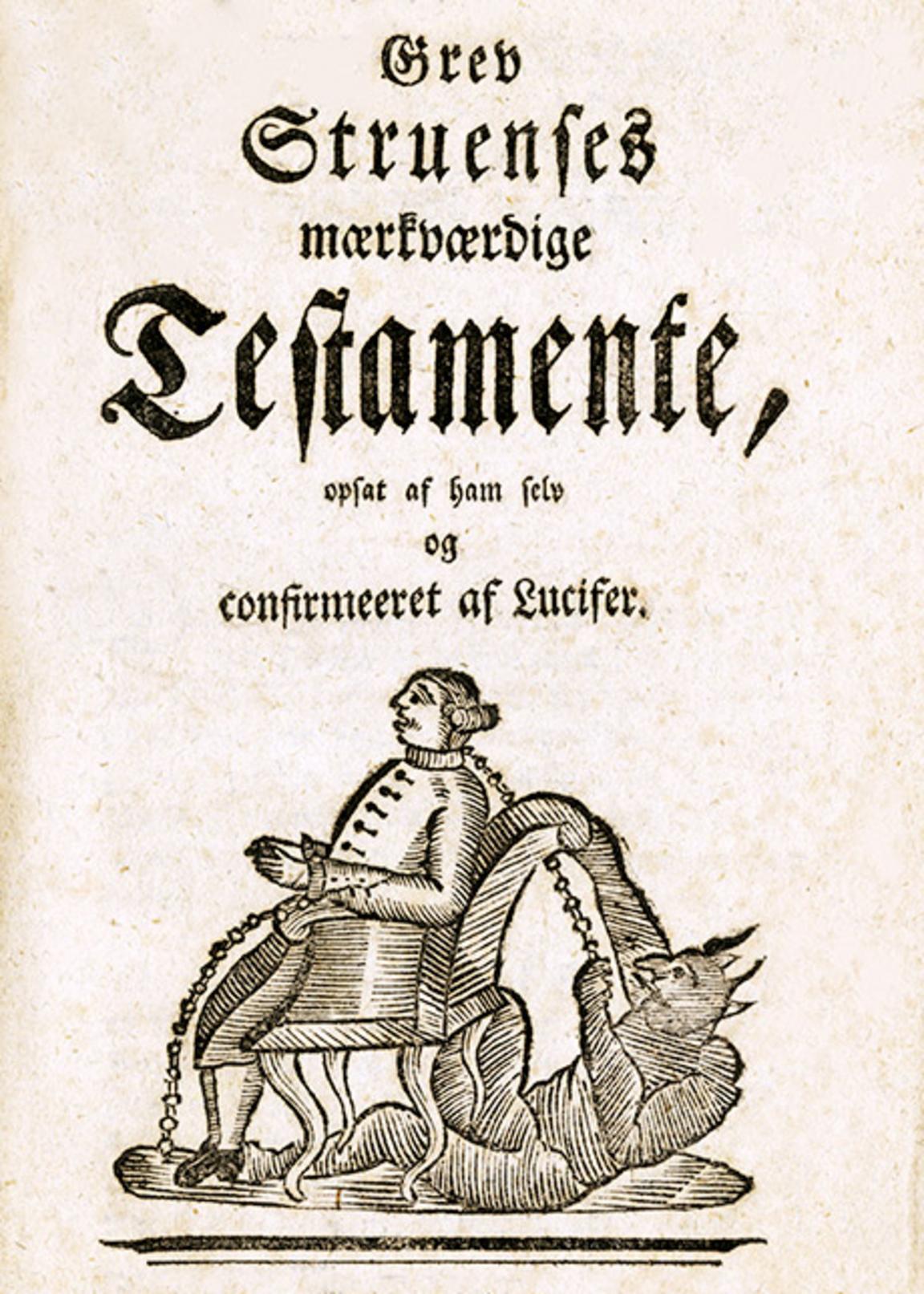
The Danish Freedom of the Press Collection in context
The authors of Grov konfækt also make parallels between what is currently known as "fake news" when people in the time of the freedom of the press tried to sway the public opinion against Struensee, by using pamphlets to accuse him of harbouring plans of a gory revolution. (Grov konfækt, vol. 2, p. 419). Grov konfækt also points out the similarities to the Internet, and how, when a new medium is opened through political or technological means, it provides brand new opportunities for an increased number of people to take part in the public debate (Grov konfækt, vol. 2, p. 422 f.), with no editorial or governmental meddling. With this in mind, a collection such as that of the Danish Freedom of the Press should be perceived not just as a material showing what the public discourse addressed in a particular historical context. The collection is also a source material that touches upon political debate, media history and the development of the public sphere in our neighbouring nation - this at a time when similar changes took place in Sweden.
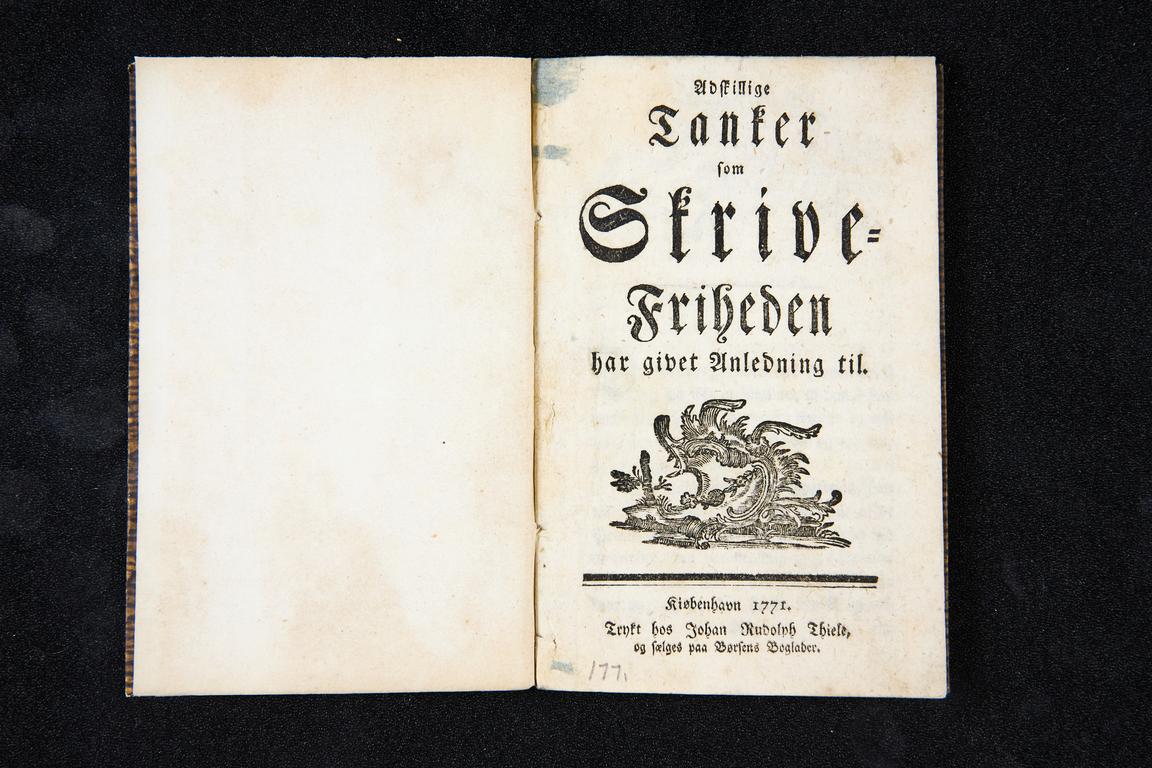

Acquisition history
Traditionally, the library has held that this collection was a donation from apothecary Gustaf Bernström, who has donated a great many other materials to the library. However, there are no documents confirming this. On the other hand, there are a number of circumstances indicating that Bernström may have played a part in the acquisition after all: he donated a lot of things to the library, collections great and small, and a lot of this material was Danish.
What counters the theory of Bernström as a donor is that none of all the texts about the Gothenburg city library featuring Bernström as well as a great many of his other donations, ever mention this particular collection. An essay by Tönnes Kleberg, Gustaf Bernström: boksamlare, mecenat, bibliografisk forskare mentions many of Bernström's donations, but not this one. The absence of mentions continues through the annuals of the library from 1927-1960, despite a wealth of other details being noted there. For example, the library annual of 1942 states that Bernström has donated the third issue of the Gothenburg newspaper Hwad Nytt Hwad Nytt (Göteborgs stadsbibliotek, årsberättelse 1942, p. 7) and the annual of 1944 that he has assisted in filling the gaps in the library's holdings of Stockholm newspaper Stockholms-Posten (Göteborgs stadsbibliotek, årsberättelse 1944, p. 6). If these comparatively minor donations are mentioned, a collection of 331 titles from the Danish freedom of the press period ought to have been mentioned in a similar way.
Another argument against Bernström as a potential donor is that he was allegedly a picky collector, highly choosy about the condition of the materials. The individual titles of the Danish Freedom of the Press Collection are arguably sound and complete, but can hardly be said to be in an otherwise pristine condition. Bernström served as the library's treasurer in 1931-1957 and according to Tönnes Kleberg he provided regular economic grants to the library, enabling the acquisition of particular objects, including the Stig Roth Miniatures Collection and the correspondence and archives of Gustaf af Geijerstam (Kleberg, p. 19 f.). The acquisition of the Danish Freedom of the Press Collection might have come about in a similar way. With all this in mind, it is unlikely that the collection constitutes an ordinary donation from Bernström.
A couple of the titles of the Danish Freedom of the Press Collection of the Humanities Library are bound together, and for this reason, the collection has 329 shelf numbers.
The pamphlets bear the stamp of the Gothenburg city library, plainly showing they were acquired before 1961, when the library was made the Gothenburg University Library. In the 1930s, the library augmented its collections with a great many Danish titles, and the collection may have been acquired during this period, possibly towards the end of the 1930s. Since then, it has been given little priority, as other, larger collections have arrived at the library, demanding much effort and time.
Read more
En turbulent tid i Danmark, Marginalia on the Danish freedom of the press period
Freedom of the press writings, from the Royal Danish Library
Horstbøll, H., Langen, U. & Stjernfelt, F. (2020). Grov konfækt: tre vilde år med trykkefrihed 1770-73. (1st ed.). København: Gyldendal.
Horstbøll, H., Langen, U. & Stjernfelt, F. (2022). The world's first full press freedom: the radical experiment of Denmark-Norway 1770-1773. Berlin: De Gruyter Oldenbourg.
Kleberg, Tönnes (1967). Gustaf Bernström: boksamlare, mecenat, bibliografisk forskare. Uppsala.
Suggested research topics
- An overview of the collection's contents. What is represented here, and how does it mirror the time and context of the material?
- Bibliographical research
- Comparative studies of Swedish conditions regarding censorship and freedom of the press.
Please contact us if you have any suggested research topics you would like to share!